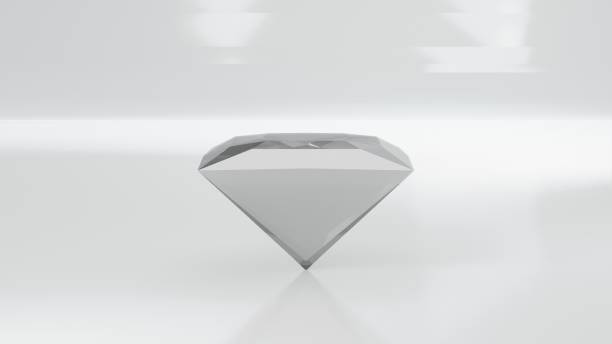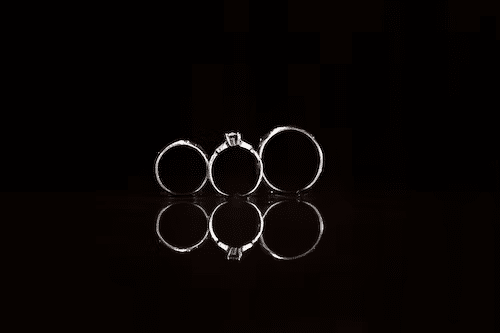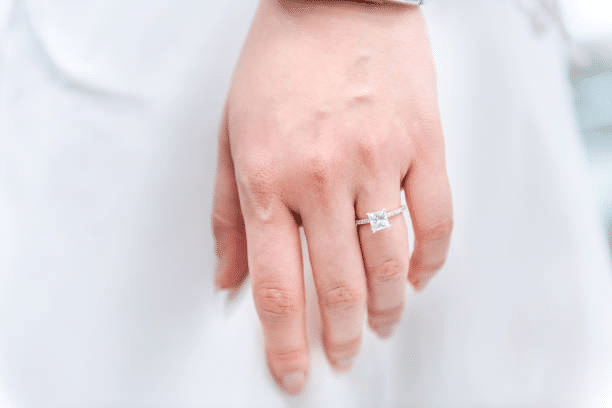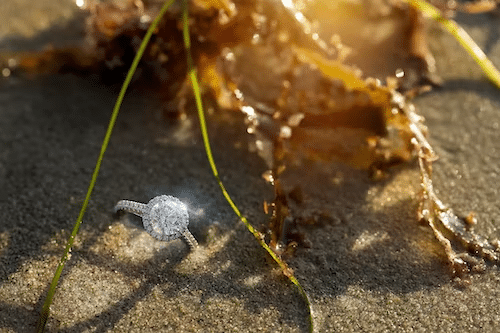The pristine lines and stunning sparkle of a princess-cut diamond exude strength and elegance. This Diamonds 101 tutorial is for you if the dazzling princess cut is what you’re after. You’ll learn all about princess cut diamonds—their qualities, background, pros, and cons—in this detailed guide. Also discussed are the most common places to find princess-cut diamonds, as well as what to look for in a princess-cut diamond, and how it stacks up against other popular diamond shapes.
Princess Cut Diamonds: A Brief History
Diamond cutter Arpad Nagy of London coined the term “princess cut” in the 1960s. It was Nagy who came up with a new take on the French cut, a square shape with a distinctive x-shaped facet pattern. He dubbed his new style the “princess cut” or “profile cut.” Around the same time, other diamond cutters, such as South Africa’s Basil Watermeyer, came out with their square diamond cuts. The Barion cut, developed by Watermeyer, is a rectangular diamond with 81 facets that is brilliant-cut. Diamond cutters throughout the world would come up with their variations on the square cut and give them names. Princess cut, however, is the word that has survived with the public, and “princess cut” is now commonly used to refer to any brilliant-cut square-shaped diamond.
- Princess Cut Diamond Benefits
Just like tanzanite rings, It’s hard to find something not to like about princess-cut diamonds. Fancy-cut gemstones are elegant and captivating. Their sharp contours make them appear daring and modern, while their dazzling scintillation provides all the glitz and drama you could want.
Princess cut diamonds offer an attractive price point in addition to their magnificent brilliance and eye-catching design. On the whole, princess-cut diamonds are 20-40% cheaper than their round counterparts. This is due in large part to the fact that, like all fancy shapes, princess-cut diamonds are less expensive than their round counterparts. The cut of a princess diamond, however, gives it an additional price advantage over other fancy forms. Diamond crystals in their natural state have a shape very similar to that of a pair of princess-cut diamonds placed table to table. Cutting princess diamonds generate minimal scrap rough diamonds, which allows diamond cutters to keep their prices low.
- Princess Cut Diamond Drawbacks

One possible drawback to princess-cut diamonds is that their corners are easily damaged. Even though diamonds are the hardest naturally occurring substance, they are not indestructible. Princess-cut diamonds are more prone to chipping because their thin, sharp corners are easily damaged.
Princess-cut diamonds are beautiful, but they are not as durable as other shapes, therefore individuals who lead active lifestyles should think about a more secure setting. Diamonds of the princess cut are best safeguarded in bezel or halo settings, which cover the stone entirely.
- How to Select Engagement Rings?

The solitaire setting is by far the most common for princess-cut diamond engagement rings. It’s easy to see why princess-cut diamond solitaires are so popular; the diamond’s distinctive, geometric shape looks beautiful in a single-prong setting. Princess cut solitaires are typically set in prongs rather than bezels, so that the cut can retain more of its original clarity. The best part is that they style with anything and everything from black T-shirts and gold chains to a classic gown.
- Grading Report & Purchasing Advice

When shopping for a center stone, a diamond grading report should be your priority. A diamond’s carat weight, cut grade, color grade, and clarity grade are just a few of the characteristics listed in a diamond grading report. Insight into a diamond’s quality and appeal can be gained from this report. In addition, a diamond grading report verifies that the diamond you purchased is authentic and possesses the features advertised by the seller. Center stones should only be purchased if accompanied by a grading report from a recognized gemstone grading laboratory, such as the Gemological Institute of America (GIA) or the Gemological Institute of America (EGL USA).
- Four Cs Used in Choosing Princess-Cut Diamonds
In general, the 4Cs of diamonds—cut, color, clarity, and carat weight—are shown somewhat differently depending on the diamond’s shape. Since both the princess cut and the round cut are proportionate forms, the carat weight of a princess-cut diamond is quite close to that of a round-cut diamond. Cut grade, color grade, and clarity grade are all important, but the princess cut diamond requires extra care.
Endnote
How effectively a diamond was cut is measured by its cut grade, and this has a significant impact on the stone’s brilliance and beauty. Princess cuts are particularly tricky since they do not fall under any one category of diamond cut grade. However, the GIA does not provide an overall cut grade for princess cut diamonds, only separate marks for Polish and Symmetry. The diamond industry simply cannot agree on what constitutes a flawless princess-cut diamond, and hence princess-cut diamonds are not widely available.



